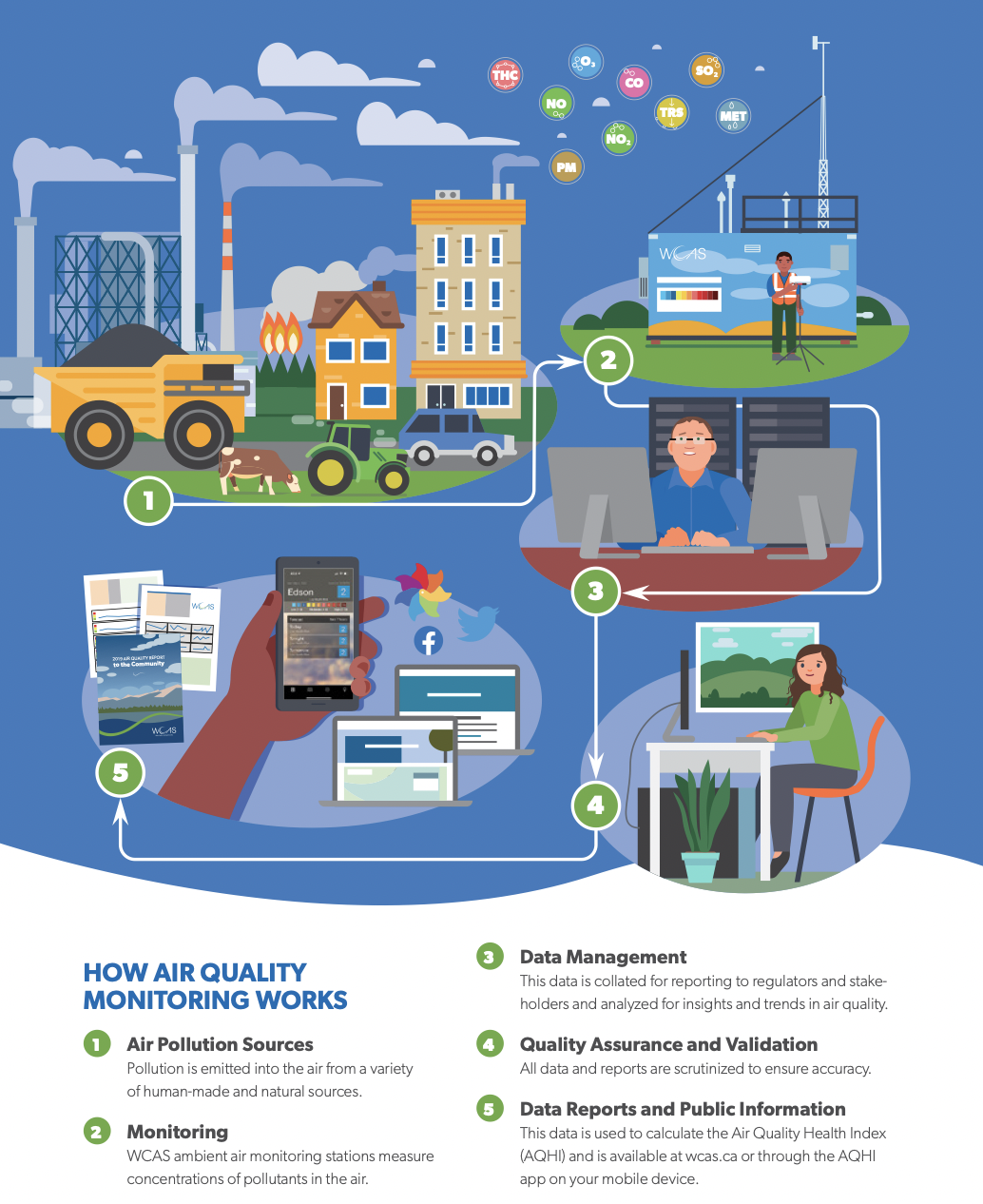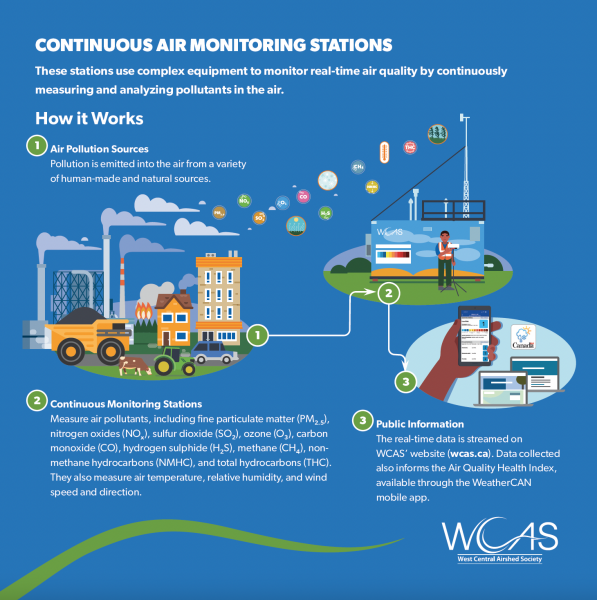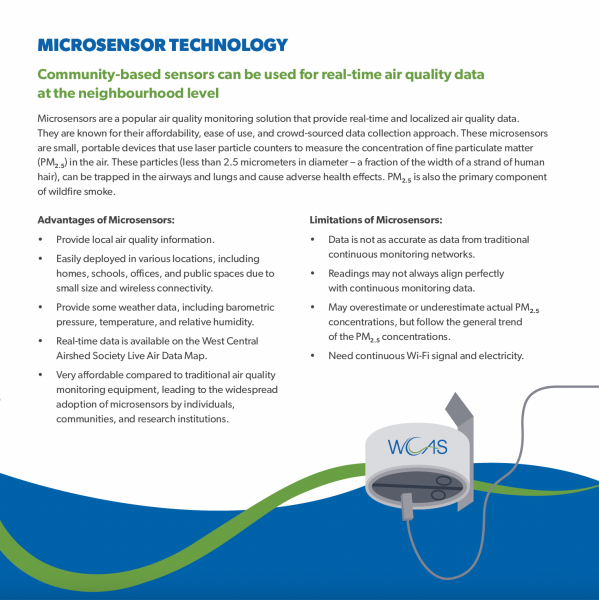WCAS collects air quality data using different methods
Continuous monitoring equipment provides nearly instantaneous measurements of ambient concentrations of sulphur dioxide (SO2), oxides of nitrogen (NOx), ozone (O3), fine particulate matter (PM2.5) and total hydrocarbons (THC). Averages are calculated over one-minute and one-hour intervals to determine maximum and minimum atmospheric concentrations. The WCAS air quality monitoring program focuses on acid-forming gases, air quality parameters that may affect the environment, and parameters that are of interest to health professionals. Emphasis is placed on obtaining credible and scientifically defensible data. The quality control and quality assurance program includes daily checks of calibration and instrument performance, together with regular multi-point calibrations and government audits. Data is examined for long-term systematic errors and all raw and quality control data is archived. Air quality monitoring and reporting methods used by the WCAS are compatible with those of Alberta Environment and Protected Areas. Continuous monitoring is required to meet the Alberta Environment and Parks compliance standards for maximum hourly and daily concentrations of pollutants.
Microsensor Technology
Community-based sensors can be used to contribute real-time air quality data at the neighbourhood level. WCAS utilizes microsensors to measure fine particulate matter. Handheld or wearable air quality sensors can also be utilized by the public as part of a citizen science or educational programming to understanding air quality.


